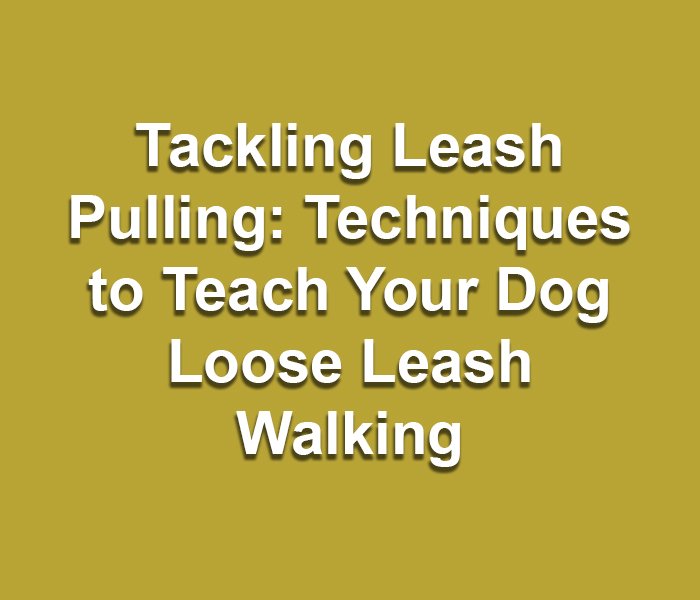Tackling Leash Pulling: Techniques to Teach Your Dog Loose Leash Walking

Introduction:
Leash pulling is a common challenge faced by dog owners during walks. It can make walks stressful and uncomfortable for both you and your furry friend. Fortunately, with the right techniques and consistent training, you can teach your dog to walk calmly on a loose leash. In this blog post, we will explore effective strategies to tackle leash pulling and help your dog master the art of loose leash walking.
Understanding Leash Pulling:
- Why dogs pull: Learn about the common reasons behind leash pulling, such as excitement, curiosity or the desire to explore their surroundings. Understanding the underlying motivations will help you address the issue more effectively.
- The impact of leash pulling: Recognize the negative effects of leash pulling on your dog’s physical well-being, leash manners and overall walking experience. This awareness will reinforce your commitment to training.
Equipment and Leash Handling:
- Choosing the right equipment: Select a suitable harness or collar that discourages pulling and provides you with better control. Avoid equipment that may cause discomfort or harm to your dog.
- Proper leash handling: Learn how to hold the leash correctly and maintain a relaxed grip. Maintain a consistent leash length and avoid tension that may signal pulling cues to your dog.
Training Techniques for Loose Leash Walking:
- Positive reinforcement: Utilize rewards, such as treats, praise and play, to reinforce and reward your dog’s desired behavior of walking on a loose leash. Reward them for walking beside you without pulling.
- Start indoors: Begin training in a calm, distraction-free environment indoors before gradually progressing to outdoor walks. This allows your dog to focus on learning the desired behavior.
- Stop-and-start method: Teach your dog that pulling will lead to a halt in movement. When they begin to pull, stop walking and only resume once they return to your side or release the tension on the leash.
- Change directions: Surprise your dog by changing directions randomly during walks. This keeps them engaged and encourages them to pay attention to your movements, leading to a more attentive and controlled walk.
- Use verbal cues: Introduce verbal cues like “heel” or “let’s go” to communicate your expectations to your dog. Consistently use these cues to prompt them to walk beside you without pulling.
Consistency and Patience:
- Be consistent: Practice loose leash walking techniques consistently during every walk. Consistency helps your dog understand the desired behavior and reinforces their training.
- Patience and gradual progress: Understand that learning loose leash walking takes time and patience. Celebrate small victories and progress and be patient with your dog as they adjust to the new training routine.
Conclusion:
Tackling leash pulling and teaching your dog loose leash walking is an essential skill that enhances your walking experience and strengthens the bond between you and your canine companion. By understanding leash pulling, you can take necessary steps to address it effectively. Using the right equipment is crucial in managing leash pulling. Implementing positive reinforcement techniques is key to teaching your dog loose leash walking. It’s important to maintain consistency and patience throughout the training process. By doing so, you can help your dog master loose leash walking. With time and dedication, you and your dog can enjoy peaceful and enjoyable walks together, fostering a happier and healthier relationship.
